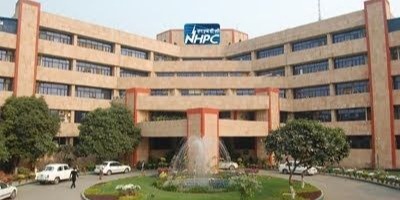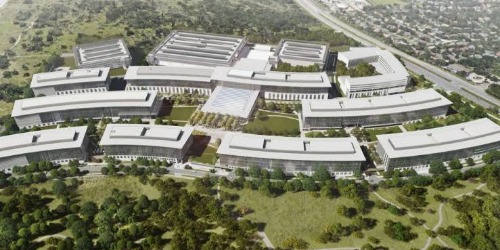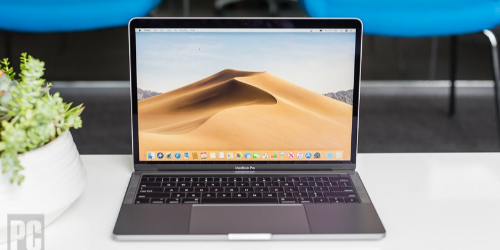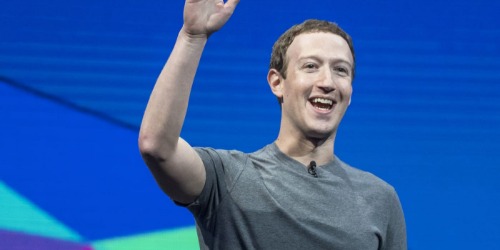India's hydropower capacity addition plans in limbo

While solar power capacity additions are slowing down, another major renewable energy hydropower capacity addition plans are also in a major limbo in the country. The public sector National Hydro Power Corporation (NHPC), India's premier hydropower company, with a total installed capacity of over 7000 MW generating from operating 24 power stations, will not be able to add new capacities, at least by 2022. At present NHPC has only two new projects that can reach power production stage in near future - an 800 MW Parbati Hydroelectric Project (Stage-II) a run-of-the-river project in river Parbati and a 2000 MW Subansiri Lower hydroelectric project, the biggest hydroelectric project undertaken in India so far, another run of the river scheme on river Subansiri at North Lakhimpur on the border of Arunachal Pradesh and Assam.
India, the 7th largest hydropower making country in the world, had an installed hydro capacity of around 45,400 MW by end 2018. The annual growth in capacity last year was just 1 per cent, which was the lowest since 2009. It is estimated that about 35 hydel power projects of 12,000 MW are under construction at various stages, but at least half of them worth over 6,000 MW have been stalled due to many issues from environmental issues to local protest, land acquisition and funding.
As per the earlier plans, NHPC Limited had drawn up an ambitious plan to add about 6,000 MW of hydropower capacity by the end of the year 2022. The last hydropower project the public sector company commissioned was in April 2018, a 330 MW Kishanganga Hydroelectric Project in Jammu & Kashmir.
The major works in 800 MW Parbati-II are being done, except completion of a tunnel, where NHPC is facing geological challenges. The project is part of the 2,013 MW Parbati project, Asia's biggest hydropower project, which was initiated in 2000. The Parbati-1 project has not taken off so far. Parbati-II continues to face geological challenges and the company expects the project to be commissioned only in FY22, brokerage firm Motilal Oswal noted in a recent analyst report.
The report also said NHPC has restarted works of Subansiri Lower, which had stopped construction activities since 2011 due to local agitation. "We have positive expectations about restarting the 2000 MW Subansiri Lower H E Project, and we are in a position to complete the project within 3 and half to 4 years of the restart", NHPC chairman and managing director Balraj Joshi had said in a television interview a few months ago.
"Construction on NHPC's Lower Subansiri II has restarted from October. Contracts for construction of the powerhouse though are yet to be awarded and NHPC expects the project to be completed by 2QFY24", said the report.
NHPC, which took over 500 MW Teesta VI hydroelectric project on Teesta River from Lanco for near Rs 900 crore a few months ago, also had recently signed a Memorandum of Understanding with the Himachal Pradesh Government for the execution of 449 MW Dugar HE Project. Teesta VI is expected to be completed in five years as the project requires the construction of two tunnels, which will take time given the difficult geographical conditions. It takes around 8-10 years to construct a hydropower project and costs nearly Rs 10 crore per MW, whereas solar or thermal capacity costs less than Rs 2.65 crore and Rs 4.5 crore per MW respectively.
Cost overruns, time delays due to geographical challenges and land acquisitions have historically delayed most of the hydropower projects in India for many years. The Central Electricity Authority had earlier assessed economically exploitable hydropower potential to the tune of 1,48,700 MW of installed capacity in India, which is ranked 5th in the world in terms of exploitable hydro-potential. In addition to this, the CEA had felt India can add 94,000 MW of pumped storage and hydro-potential from small, mini and micro schemes to the tune of 6,782 MW from 1,512 sites.
For the last financial year, NHPC had revenues of Rs 8697 crore with net profits of Rs 2630 crore.
- 0
- Leave a comment
Apple starts Mac Pro production; expands Austin facility

Apple announced on Wednesday that it has begun manufacturing the upcoming Mac Pro at its facility in Austin, Texas. The new computers are scheduled to start shipping in December. The tech giant's 244,000 square-foot production plant employs over 500 people in roles such as electrical engineers, electronics assemblers, and more. Additionally, right next to that facility, Apple has started the construction of its new campus.
Apple CEO, Tim Cook, in a statement, said, "Building the Mac Pro, Apple's most powerful device ever, in Austin is both a point of pride and a testament to the enduring power of American ingenuity. With the construction of our new campus in Austin now underway, Apple is deepening our close bond with the city and the talented and diverse workforce that calls it home."
Most of the Apple products are designed in Cupertino, California but are assembled in China. However, the upcoming Mac Pro will be designed, engineered, and manufactured in the United States of America. The new Mac Pro was revealed in June 2019 during Apple's Worldwide Developers Conference (WWDC) conference held in San Jose, California.
Apple's three-million-square-foot campus will cost around $1 billion for construction and is expected to be completed in 2020. Apple plans to host 5,000 employees with the capacity of up to 15,000.
Apple's new Mac Pro will be arriving after nearly 5 years as the last version of the Mac Pro came out in 2013. The new Mac Pro features a new tower-based design, which replaces the previous generation Mac Pro's cylindrical shape, and can be configured with up to 28 cores processor chip and up to 1.5 terabytes of RAM. The price of the upcoming Mac Pro starts at $5,999.
Alert for software developers! This tax benefit won't apply to you

The government has clarified that software development is not manufacturing, hence, it will not be eligible for the 15% tax rate cut applicable to new manufacturing companies.
The government will clarify this and other related matters in the winter session of Parlia-ment starting Monday. "The amendment bill will clarify that 15% corporate tax rate is only for new manufacturing entities and that software development is not manufacturing," a government official said.
The Taxation Laws (Amendment) Ordinance, 2019 which will be tabled in the current winter session Parliament will ratify the government's announcement in September to slash tax rates from 30% to 22% for the existing companies and 25% to 15% rate cut for the new manufacturing companies.
The amendment to the bill follows the clarification sought by the industry, if the software development comes under the ambit of manufacturing and qualifies for the reduced tax rate.
On September 20, Finance Minister Nirmala Sitharaman announced the government's deci-sion to cut corporate tax rate to 22% from 30% for domestic firms and new domestic manu-facturing companies.
She added the effective corporate tax rate for the companies would be 25.17% inclusive of all surcharges and cess. For new manufacturing companies (incorporated on or after Octo-ber 1) the existing tax was reduced to 15% from 25%. The effective tax rate after surcharges and cess will be 17%.
This reduction in tax rate has made India one of the lowest tax states in South and Southeast Asia.
The government is also expected to clarify several other things, comprising transparency on unabsorbed depreciation and accumulated Minimum Alternate Tax (MAT) credit in the pro-posed bill, the report added.
It will further elaborate that carry-over loss will also not be permitted in case an amalga-mated entity chooses the 22% corporate tax rate without incentives.
The government had issued a circular in October this year clarifying that if a company opts for the 22% rate, it will not be eligible for availing the accumulated MAT credit.
India, US bright spots for Apple Mac amid shrinking PC market globally

Amidst the focus on iPhone, Apple during the company's 2019 Q4 earning calls revealed that it has generated an all-time revenue record for Macs in India.
Luca Maestri, the Chief Financial Officer at Apple, also highlighted that more than half of the customers purchasing Macs during the quarter were new to Mac and the active installed base of Macs again reached a new all-time high.
At the time when the PC market is shrinking globally in consumer space and only registering growth in the commercial segment, India along with the US and Japan have been bright spots and growing market for Cupertino giant's Mac line-up. However, the company did not share any breakup on the individual and commercial sales.
From being preferred by professionals, Mac has over the years become a preferred work machine across genres. Industry experts suggest Mac has a broad user base in India. Even organisations are opening to what work machine -Windows and Mac -employees prefer to work on. And once an individual becomes part of the Apple ecosystem, it gets very hard to leave. Apple's Mac range offers quality, reliability and performance and easily lasts anywhere for five years or even more. To top this, Apple has constantly been releasing software updates focusing on privacy and security. And unlike Windows, the Mac platform is mostly free of bugs and virus.
"Apple has always been the aspirational brand of choice for India, be it iPhones or Macs. Whether it is students or professionals, the Mac has retained high consumer loyalty on account of performance and longevity. On the back of promotions such as "back to school" targeting students, as well as attractive financing schemes, Apple has been able to attract many first-time buyers for Mac, contributing to a significant revenue boost" says Prabhu Ram, Head-Industry Intelligence Group, CyberMedia Research (CMR).
Various factors make Mac hardware in reach for many. Apple's "back to school" is quite popular among young professionals in India. It offers a discount of between 12 to 15 per cent on Mac hardware. Even the updated MacBook Air and MacBook Pro were a part of Apple's "back to school" promotion through the Apple Education Store.
Affordability including discounts and low-cost EMIs have helped users to purchase a Mac. The entry-level MacBook Air with a 13.3-inch display, Intel Core i5 processor, 8GB RAM and 128 GB storage priced at Rs 84,900 is available for Rs 62,000 on Amazon India. Even if bank offer of low-cost EMI isn't available, users can easily convert their purchases into three to six months EMI at the time of making payment.
In the September quarter, iPhone revenue was $33 billion. While this is a 9 per cent decline over last year, it is still a significant improvement of over the 15 per cent decline Apple saw across the first three quarters. There has been a significant upswing in demand towards the end of the quarter because of the new generation devices including iPhone 11. It is in great demand in India due to aggressive pricing and cashback offers.
"With its prudent pricing strategy on the iPhone 11 and its attractive specs, Apple has been able to get increased consumer demand than before. With increased local manufacturing and new retail stores in the offing, we believe that Apple is on a stronger footing this year", adds Ram.
Of late Apple's focus has shifted to the Indian market. Currently, Apple is manufacturing hardware in China, Brazil and India apart from the few MacBook Pros in the US.
In India, iPhone 7 is being assembled at Wistron facility in Bengaluru. It started assembling the iPhone XR at the Foxconn facility in Chennai. People familiar to the matter confirmed Apple is unlikely to start assembly of the new iPhone 11 line-up in India anytime. The reason being the Chennai facility is a new plant of Foxconn and simultaneous production of new devices does not happen at a new facility. By the time the iPhone 11 starts assembling in India next year, there will be more iPhones in Apple's portfolio.
For FY2019, Apple India has seen over 70 per cent fall in net profit to Rs 262.27 crore, while revenues fell 19 per cent over the previous fiscal, as per regulatory documents. However, much has changed in the last two quarters (April to September 2019). Apple's quarterly earnings report suggests Apple is once again witnessing an upward growth trajectory in India.
Facebook to soon roll out WhatsApp Pay in India, says Mark Zuckerberg

Facebook will soon launch its payments service WhatsApp Pay in India. The social media giant has for long been in the process of testing the payments service which will be operationalised in the country in the coming days, said the company's CEO Mark Zuckerberg. He, however, did not give any specific timeline for the launch adding that more details will be shared soon.
WhatsApp Pay as and when launched, would compete against the likes of Paytm, PhonePe and Google Pay.
"We have our test going in India. The test really shows that a lot of people are going to want to use this product. We're very optimistic that we're going to be able to launch to everyone in India soon, but of course will share more news when we have that," Zuckerberg told analysts on an earnings call on Wednesday as cited by the IANS.
The payments service's launch has been delayed owing to data compliance concerns and regulatory norms in the country, the news agency stated.
WhatsApp Pay is a peer-to-peer, UPI-based payment service that will enable users to transfer money within the instant messaging app. As and when launched it could potentially reach over 400 million users in India, especially the small and medium businesses (SMBs). Users will be able to link their UPI accounts to WhatsApp and then transact with other users accordingly.
However, the government and the Reserve Bank of India have repeatedly raised concerns over some of WhatsApp Pay's features in complying with their norms before launching it in the country.
Earlier, RBI had issued a circular directing global payment service to store transaction data of Indian customers in the country itself. WhatsApp had said that it had a local system in place to store payments-related data in compliance with RBI's regulations. However, the apex bank in its affidavit submitted to the Surpreme Court (SC) had said that the payments service did not conform with its data localisation rules.
"We differentiate between payment systems that are built on top of the existing financial infrastructure like what we're trying to do with WhatsApp payments or when we make payments in Instagram Shopping, and our work with something like Libra that is trying to build some new technological infrastructure for financial services," Zuckerberg articulated during the earnings call.
Dave Wehner, chief financial officer (CFO) at Facebook told analysts that the social media company presently has 1.62 billion daily active users, up by 9% as compared to last year. He added that the surge in numbers has been led by user base growth in India, Indonesia and the Philippines.
WhatsApp which has about 400 million users in India, has been testing its payments in the country since last year with about a million users.


